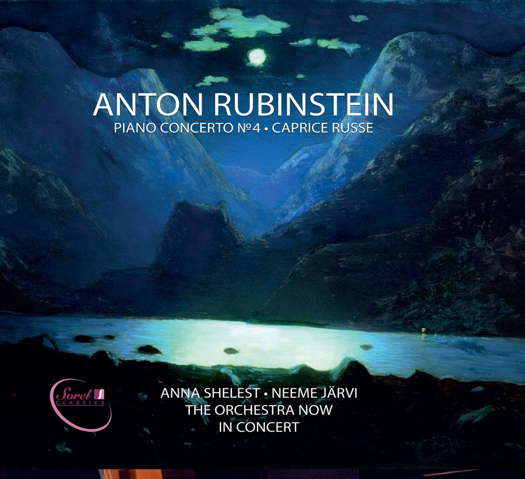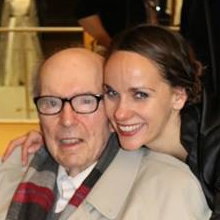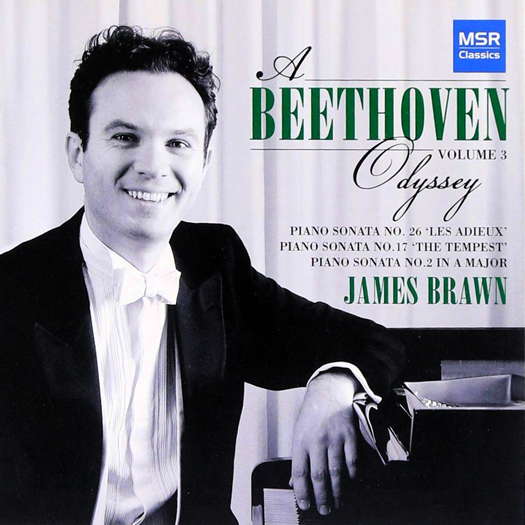
Polish and Sensitivity
STEPHEN FRANCIS VASTA listens to music for piano and orchestra by Anton Rubinstein
'The performance is excellent ...'
In my recent review of two other Anton Rubinstein concerti from these same artists, though with a different orchestra, I expressed my dismay at the recurrent shortcomings of these scores - melodic 'flatness'; short-winded, repetitive motifs; jerry-built structures - and suggested, in an accompanying blog post, that I simply wouldn't bother with them again in future. Well, I may have to eat my words now: the D minor concerto proves to be substantial and (mostly) structurally coherent.
In the first movement, a promising short introduction leads to an extended pyrotechnical flourish from the keyboard, with subsequent Lisztian expressive gestures, and some lovely contrapuntal weaving with the orchestra at 2:14.
Listen — Anton Rubinstein: Moderato Assai (Piano Concerto No 4)
(SCCD-013 track 1, 2:14-3:11) ℗ 2018 Sorel Classics :
The piano also profusely decorates the second theme, a simple string chorale. A two-note motif is characteristically, and unfortunately, short-winded, but the music flows past that episode, and right into a turbulent cadenza. The orchestra, partnered by big, busy piano chords, takes the recap.
The central Andante begins with a horn call, answered by pizzicatos and wind chords. The piano sings expressively, with a chordal left-hand accompaniment again recalling Liszt, and the music has enough weight to get past a few salonish gestures.
Listen — Anton Rubinstein: Andante (Piano Concerto No 4)
(SCCD-013 track 2, 0:00-0:59) ℗ 2018 Sorel Classics :
Bass octaves lead to a more turbulent passage and an anticipatory minore, which dissolves into a serene recap where the clarinet takes the tune. Of course, Rubinstein can't resist feinting at one more unrelated direction before the close.
Listen — Anton Rubinstein: Andante (Piano Concerto No 4)
(SCCD-013 track 2, 9:03-10:02) ℗ 2018 Sorel Classics :
Ominous short string unisons introduce the finale, which the piano takes over in a vigorous, playful duple meter.
Listen — Anton Rubinstein: Allegro (Piano Concerto No 4)
(SCCD-013 track 3, 0:17-1:07) ℗ 2018 Sorel Classics :
The composer briefly seems to revert to his bad old ways, not bothering to make the various sections, with their differing tempi and meters, fit together smoothly. But they do hold interest in their own right, with bright, clear piano textures, and the movement recovers for a satisfying resolution: the concert audience's applause is well earned.
The Caprice russe is very Russian indeed, beginning with a Rimskyan folk-contoured theme on midrange strings.
Listen — Anton Rubinstein: Caprice russe (Piano Concerto No 4)
(SCCD-013 track 4, 0:00-0:46) ℗ 2018 Sorel Classics :
The textures gradually expand, in Rimskyan variations, until the piano interrupts with a Lisztian call to order. A flowing, melancholy passage, accompanied by left-hand arpeggios, instead suggests Chopin. Following grand passages for the piano and then the orchestra, we do briefly get stalled in the composer's short-winded back-and-forth mode, until the piano introduces a faster theme, again with folkish contours. Save for that stalled bit, it's a good piece. The performance is excellent, although the woodwinds briefly come unstuck in those expanding textures.
Anna Shelest proves as adept a soloist as in the previously reviewed coupling. She never has to strain obviously at the biggest chordal moments; on the other hand, her diminuendo in the first movement's home stretch is fetching. The New York-based Orchestra NOW, founded by Leon Botstein as a training orchestra for recent conservatory graduates, mostly acquit themselves well in this 2017 concert recording. In the concerto, I blame the first movement's wheezy horns and bassoons on the writing, not the execution; the players briefly seem to lag behind Shelest in the finale. They play with polish and sensitivity under Järvi The Father.
Sound is very good all around. The piano's topmost notes and chords are slightly glassy - still a problem with digital after all this time - but, in the Caprice, the acoustic furnishes the bass with a nice resonance.
Copyright © 23 December 2023
Stephen Francis Vasta,
New York, USA





